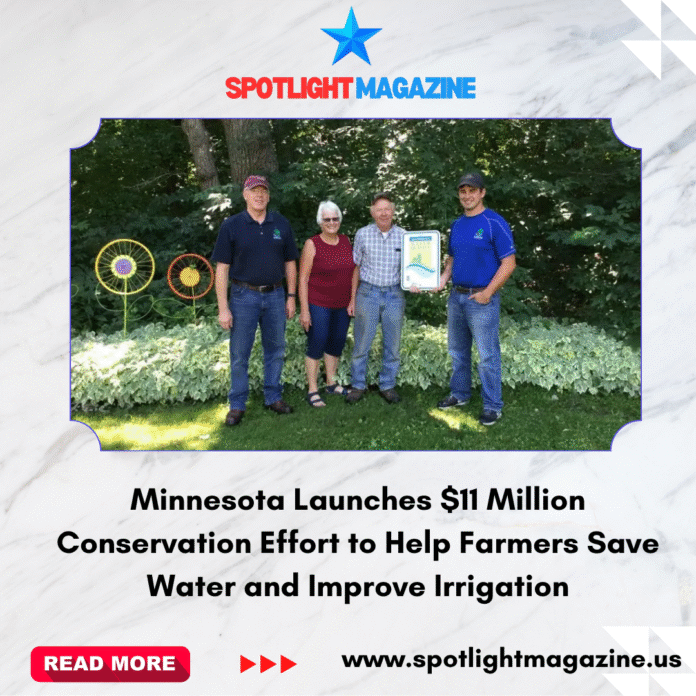Minnesota’s local Soil and Water Conservation Districts (SWCDs) are once again taking the lead in helping farmers protect water resources and use irrigation more efficiently. In collaboration with the Minnesota Department of Agriculture (MDA) and the USDA’s Natural Resources Conservation Service (NRCS), 26 SWCDs across the state will carry out a new five-year conservation program funded with $11.16 million in federal support.
This new phase builds on previous conservation work that brought $3.5 million in 2021 to similar projects aimed at improving farm practices and protecting water quality. The latest effort focuses on advancing irrigation efficiency, managing nitrogen use more effectively, and safeguarding Minnesota’s groundwater in 25 counties.
According to Agriculture Commissioner Thom Petersen, SWCDs play a key role in connecting government programs with farmers on the ground. “Their local expertise and trusted relationships are critical to ensuring these conservation dollars make a real impact on Minnesota’s soil and water resources,” he said.
Under the new initiative, SWCD staff will work directly with farmers and irrigators to offer both financial and technical assistance. The goal is to help producers install precision irrigation systems, improve nitrogen management, optimize water scheduling, and protect groundwater quality and quantity. These improvements not only benefit the environment but also help farmers save water and reduce production costs.
The financial assistance program for participating producers is expected to open in late 2025. Counties taking part in this project include Otter Tail, Wadena, Becker, Hubbard, Anoka, Benton, Cass, Clay, Dakota, Douglas, Grant, Isanti, Kandiyohi, Meeker, Mille Lacs, Morrison, Pope, Sherburne, Stearns, Stevens, Swift, Todd, Washington, Wilkin, and Wright.
Keith Kloubec, NRCS Assistant State Conservationist for Programs, praised the collaboration, noting that previous partnerships under the Regional Conservation Partnership Program have already shown strong results. “This project and these partners are a great example of what can be achieved when local expertise and national support come together. We’re seeing measurable progress in water quality and farm sustainability, and this new phase will build on that success,” he said.
The initiative brings together a broad coalition of partners, including Central Lakes College Ag & Energy Center, AgCentric – Minnesota State, the University of Minnesota, Mille Lacs Band of Ojibwe, and several irrigator associations and agricultural industry groups. Together, these organizations aim to strengthen Minnesota’s leadership in sustainable farming and responsible water use.
By combining innovation, education, and on-the-ground conservation work, this effort demonstrates how farmers, educators, and environmental experts can collaborate to protect natural resources while improving farm productivity. As climate change and drought concerns continue to grow, projects like this one are key to ensuring Minnesota’s agriculture remains resilient and sustainable for future generations.
For more details on the Regional Conservation Partnership Program or to get involved, farmers and landowners are encouraged to contact their local SWCD office.


